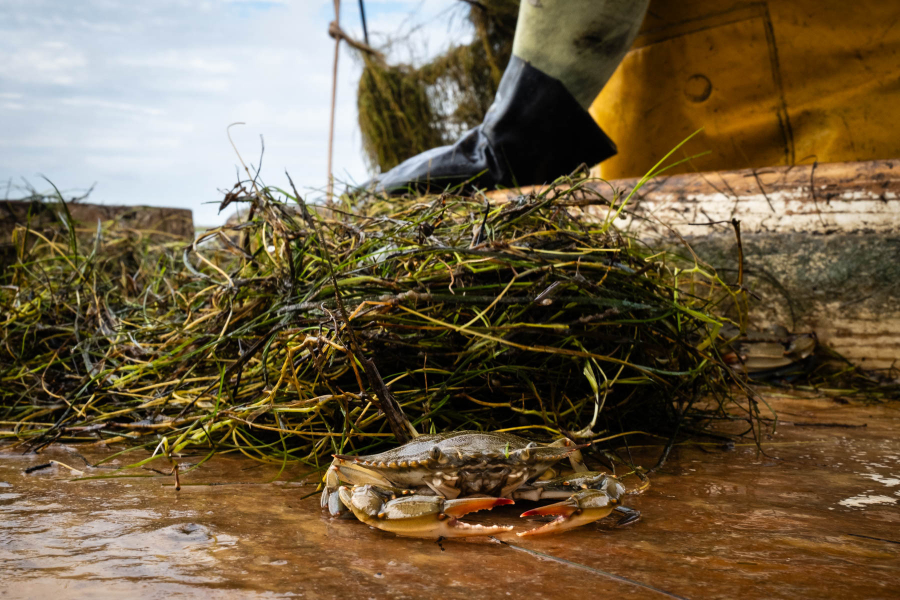Submerged aquatic vegetation, a critical blue crab habitat, bounces back in the Chesapeake Bay
The Bay’s underwater grasses continues to recover from a crash in 2019

Underwater grass is critical for the health of the Chesapeake Bay and its wildlife, most of all blue crabs, who use the habitat to hide from predators while they reproduce.
More underwater grass often leads to cleaner water, less shoreline and wetland erosion and better survival rates for key Bay species. By absorbing carbon dioxide, the Bay’s underwater grasses also help mitigate the impacts of climate change.
So how are the Bay’s underwater grasses doing?
According to preliminary data from the Virginia Institute of Marine Science (VIMS), 76,462 acres of underwater grasses were mapped in the Chesapeake Bay in 2022. This is a 12% increase from 2021 and is 9% higher than the long-term average. This increase is mainly due to the resurgence of two specific species—widgeon grass and eelgrass—which dominate the areas of the Bay with moderate to high salinity.
In 2022, spring rainfall was below average and the summer was cooler than usual, which are perfect conditions for the growth of widgeon grass and eelgrass. This is in stark contrast to 2018 and 2019, when severe rainfall resulted in excess sediment and nutrient pollution washing into the Bay. The high volume of sediment and nutrients, plus changes to the water’s salinity levels, resulted in there being roughly 38% less underwater grasses in 2019 than in 2018.
The Chesapeake Bay Program and its partners work to protect underwater grasses by improving water quality conditions. While rainfall and temperature are largely out of the partnership’s hands, the Bay Program coordinates extensive pollution management in Maryland, Virginia, Pennsylvania, New York, Delaware, West Virginia and Washington, D.C. These jurisdictions all implement best management practices to reduce sediment and nutrients from entering waterways, which would otherwise threaten underwater grasses.
Similar to 2022, the La Nina cycle is expected to make summer 2023 cooler than normal. However, summer 2024 is predicted to be warmer. This will be a good test for how resilient underwater grass is in the Bay and how well the partnership’s pollution management is working. If jurisdictions within the Chesapeake Bay watershed continue to implement practices that remove or contain nutrients and sediment that’s on the land, excess rainfall may have only a moderate impact on underwater grass abundance.
That will be good for blue crabs, oysters, fish and other marine life that count on this vital habitat.
Want to do your part to protect the Bay’s underwater grass? Visit our Help Protect the Bay page to find actions you can take at home, work or in your community.

Comments
Im confused alittle in regards to seagrass. The Little Annemessex River (Somerset Co) has a lot of seagrass, however, crab scrapers are allowed here. There is an abundance of dead seagrass on our beaches that breed thousands of biting bugs. I imagine crab scraping is affecting our blue crab population. Is crab scraping bad for our environment?
Planted a forest in my back and front yard to help the Bay!
You can check out the full dataset on the VIMS website here: https://www.vims.edu/research/units/programs/sav/reports/2022prelim/index.php
Thank you!
Your comment has been received. Before it can be published, the comment will be reviewed by our team to ensure it adheres with our rules of engagement.
Back to recent stories